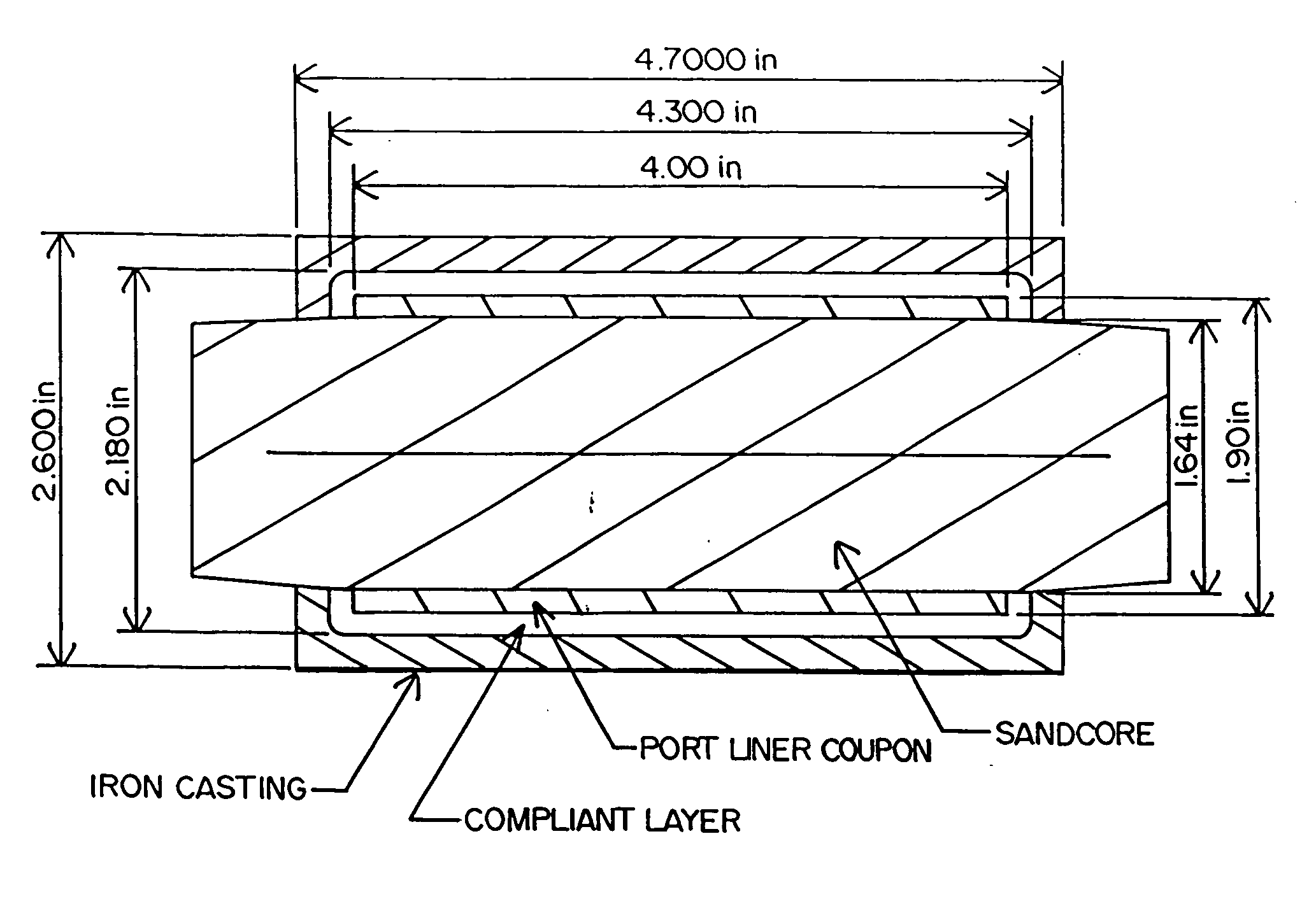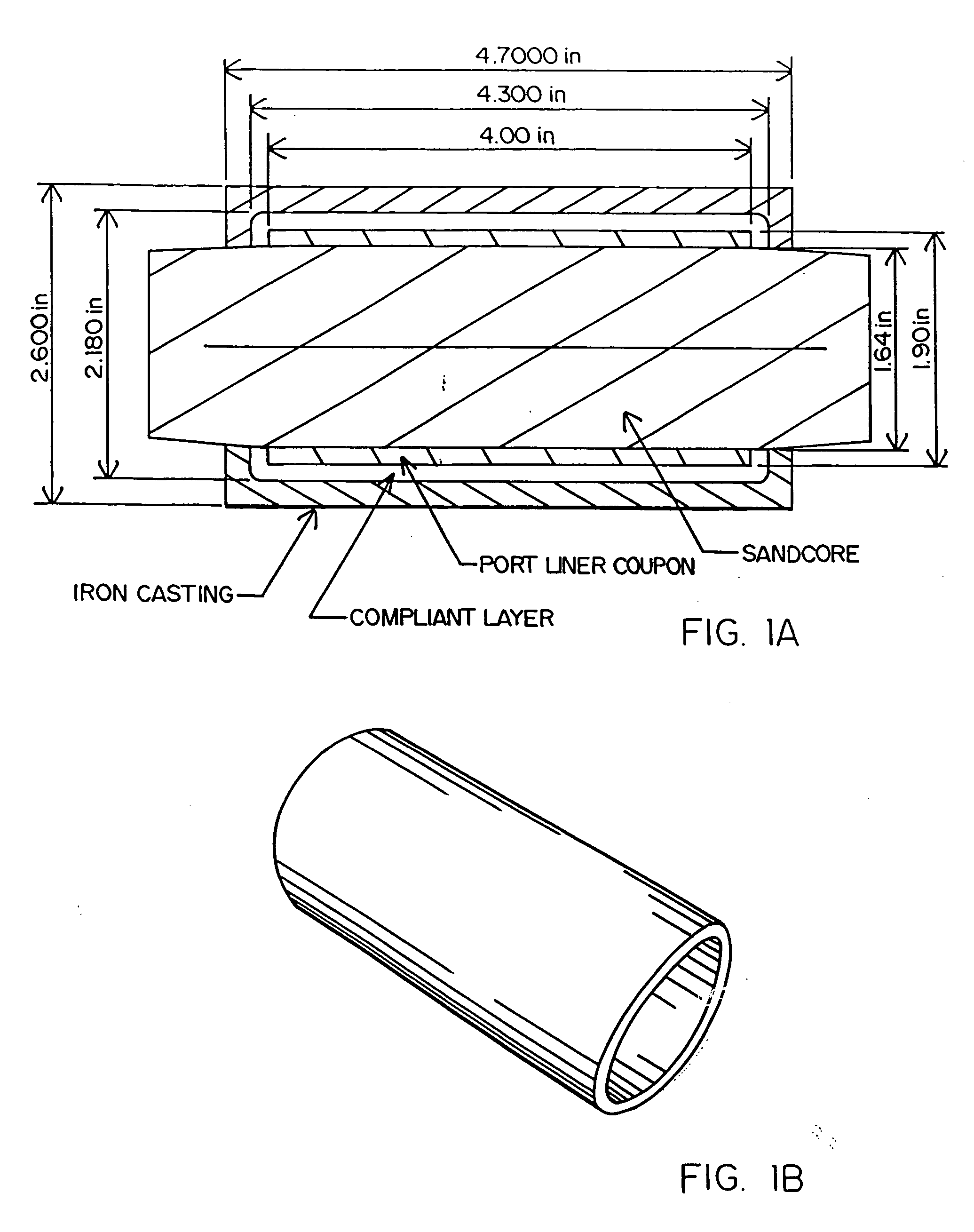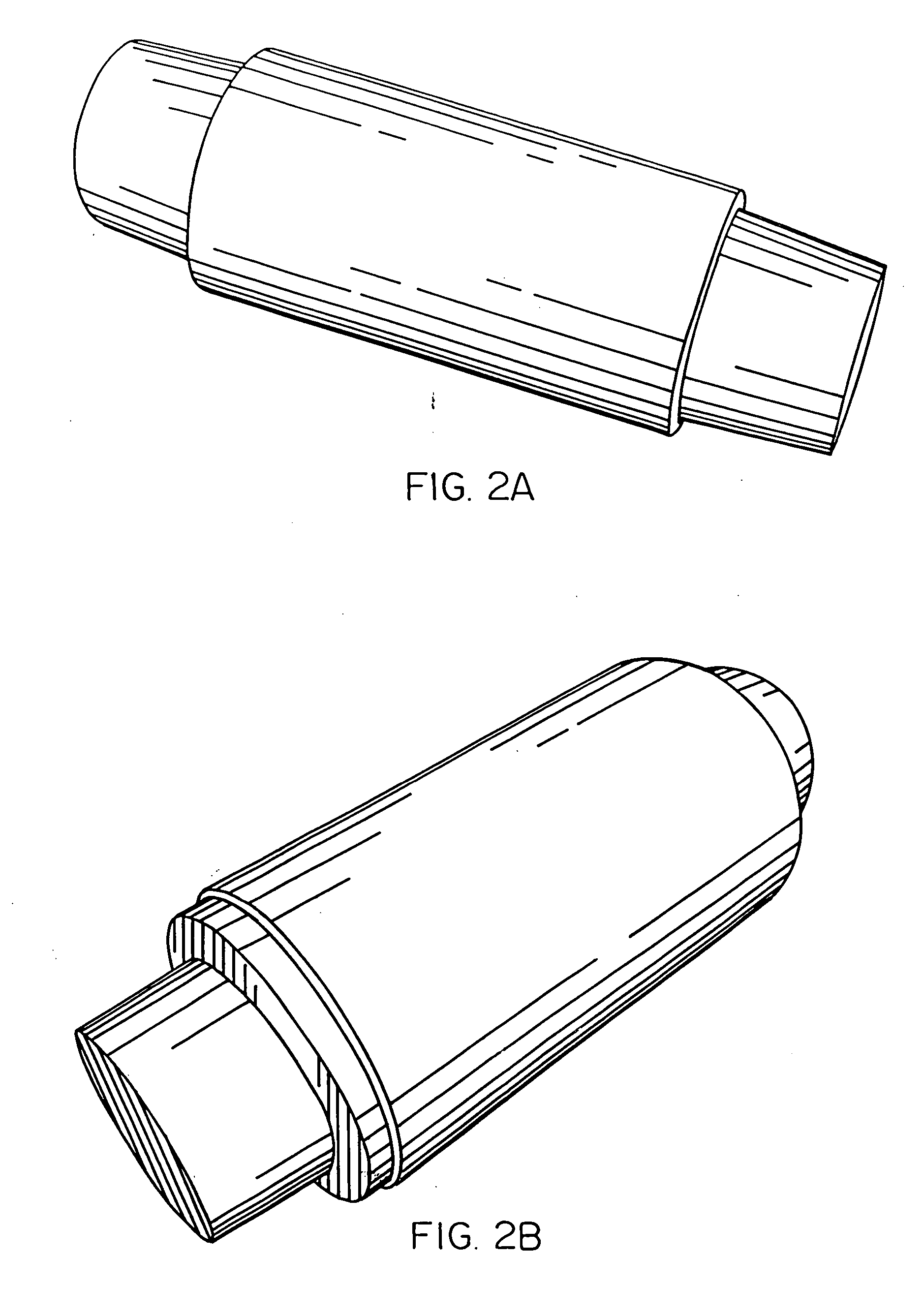Castable ceramic port liner
- Summary
- Abstract
- Description
- Claims
- Application Information
AI Technical Summary
Benefits of technology
Problems solved by technology
Method used
Image
Examples
Embodiment Construction
[0041] Fused silica has excellent thermal properties that make it attractive in applications where good insulation and thermal shock resistance are desired. However, it has a temperature use / exposure limit of approximately 2200° F. For this reason, a monolithic fused silica material has not been considered in casting applications in which the pouring temperatures are above this use limit. Most of the prior art involves the use of more exotic materials that have higher temperature use limits and a broad range of mechanical properties along with higher cost. Among these are materials such as aluminum titanate, NZP, silicon nitride, ceramic fiber-containing composites and some metallic alloys.
[0042] A fused silica port liner coupon was successfully cast into gray iron by the Applicant hereof. The coupon measured 1.6″ inner diameter by 4″ length and 0.14″ wall thickness. The insert coupon was wrapped with an aluminosilicate fiber blanket to provide an insulating compliant layer to faci...
PUM
 Login to View More
Login to View More Abstract
Description
Claims
Application Information
 Login to View More
Login to View More - R&D
- Intellectual Property
- Life Sciences
- Materials
- Tech Scout
- Unparalleled Data Quality
- Higher Quality Content
- 60% Fewer Hallucinations
Browse by: Latest US Patents, China's latest patents, Technical Efficacy Thesaurus, Application Domain, Technology Topic, Popular Technical Reports.
© 2025 PatSnap. All rights reserved.Legal|Privacy policy|Modern Slavery Act Transparency Statement|Sitemap|About US| Contact US: help@patsnap.com



